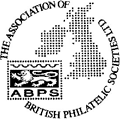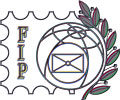
|
| Contacts |
| Junior Page |
| Philatelic Links |
| Societies |
| Workshops |
| Events |
| HAMPEX |
| Main Competition |
| Entry Forms |
| Competitive Exhibiting |
| Philatelic Classes |
| Awards and Marking |
| Competition Rules |
| Home |
|
Introduction
The following hints and tips may assist exhibitors
when submitting competitive exhibits. The comments
are mainly directed at exhibitors of Postal
History, Open Philately and Aerophilately,
however the majority of the comments and criterion
can be interpreted for all aspects and classes of Exhibiting and
Judging.
Exhibits are judged and displayed in frames of
sixteen sheets arranged in four rows of four sheets
each. The pages are arranged to flow from the top
left along the top row and so on from left to right
with the sixteenth sheet placed in the bottom right
hand position on row four. When considering the
overall impression of an exhibit this arrangement
should be borne in mind, looking at the balance of
objects on each page and how they appear together
in the frame. A second frame is arranged in a
similar manner for 32 sheet competitions.
Whether the exhibitor likes it or not, the judges
have a limited amount of time to judge a whole
competition. In the case of HAMPEX, the judging
team starts at 10 am and aims to finish by about 5
pm with a break for lunch. In this period they view
and mark about 50 frames of exhibits and review the
winning entries for consistency. The competitor
must therefore identify clearly the main points of
their exhibit and create a winning impression that
the judge can absorb quickly and easily.
A copy of the introductory page (also called the
Title Page, and submitted with the entry form) is
sent to the judges prior to judging day to give
them a flavour for all the exhibits to be seen and
an opportunity to check points with which they may
be unfamiliar. The introductory sheet (aka
introductory page) should therefore show the
exhibitor's knowledge of the material they have
chosen and help the judge (and the public) to
appreciate the significance of key items on
display. Bluntly, tell the judges what you are
showing them, how you are going about it and point
out anything that you think they should take
particular note of. All classes of exhibit require an introductory page.
Philatelic Importance:
Philatelic Importance requires an evaluation of
philatelic significance of the subject chosen by
the exhibitor, in terms of scope, degree of
difficulty of the subject and the philatelic
interest of the exhibit. The following points
should be considered when evaluating the Importance
criterion:
Treatment
The Treatment of the Exhibit requires an evaluation
of completeness and correctness of the selected
material made by the exhibitor to illustrate his
chosen subject. As for any story, an exhibit should
have a clear beginning, a central theme and a
logical ending. The title and a clearly defined
plan (or introductory page) are important parts of
an exhibit which explain to the Judge and the
viewer what the exhibitor is trying to show. The
following should be considered when evaluating the
Treatment criterion:
Philatelic and Related Knowledge, Personal
Study and Research
Philatelic and Related Knowledge, Personal Study
and Research require the following evaluation:
Knowledge is the degree of knowledge of the
exhibitor as expressed by the items chosen for
display and the related comments; Personal Study is
the proper analysis of the items chosen for
display; Research is the presentation of new facts
relating to the chosen subjects. The following
should be considered when evaluating the criterion
of Philatelic and Related Knowledge, Personal Study
and Research:
Condition and Rarity
Condition and rarity are obvious but can often be
contradictory. The exhibitor will have to decide
whether to display a scarce cover in poor condition
or a not so scarce cover in a better condition. One
must bear in mind the best quality available.
Modern material should be in first class condition.
Rarity is directly related to the philatelic items
shown and the relative scarcity of material
available. Rarity is not always equivalent with or
proportional to value. As condition varies for
various material and items, judges should consider
the quality obtainable. In general, good condition,
clear legible postal marking and cachets, and a
good general appearance should be rewarded, while
poor quality should be penalised. Stamps on covers
and other items should be in good condition. Crash
and postal damaged covers and items are an
exception to the general rule on condition.
However, the postal markings applied to salvage
covers should be as clear as possible. Repaired
items are to be mentioned in the description. The
detection of obviously faked or repaired material,
which is not described as such, will result in a
penalty.
The following points should be considered when evaluating the Condition criterion:
The following points should be considered when evaluating the Rarity criterion:
Presentation
Presentation should complement the treatment of the
exhibit by its general layout and clarity. Judges
should evaluate how the presentation enhances the
understanding and attractiveness of the exhibit.
Illustrations of relevant postal markings are
necessary only when the originals are not clear
enough to the observer. When it is desirable to
illustrate significant markings on the reverse side
of a cover, they may either be drawn or illustrated
with a reproduction (photograph, photocopy or
scanned image), but a reproduction should be
apparent as such to the observer. Colour copies or
photographs should be reduced at least 25% in size
from the original and clearly marked as a copy.
Presentation may be worth up to 15% of the mark and
some exhibitors do not give this enough attention.
A nicely presented exhibit may assist the jurors in
a better understanding of the Treatment, Knowledge
and Rarity of the exhibit and therefore gain extra
points under those sections.
The following points should be considered when evaluating the Presentation criterion:
Some Tips
These notes were prepared by Brian Presland and
Julian Jones. The
ABPS
published Booklet No. 3: Competitive Exhibiting at Local and
Federation Level, By Dr A Huggins, 2001.
Tony R Findlayson wrote about the
importance of the introductory sheet in the ABPS
News of October 1997. The British Philatelic
Trust published a booklet entitled Guidelines
for Thematic Judges and Exhibitors at Local and
Federation Level by Franceska Rapkin, FRPSL.
The Hampshire Federation competitions are run as a stepping stone towards ABPS National competitions. Details of the marking, rules and qualification criteria are found on the ABPS website under "ABPS Exhibiting->Downloads". Here is a useful resource on the website of the American Association of Philatelic Exhibitors where you will find a large range of exhibits to study, including "How to Build a Philatelic Exhibit". For someone who has been collecting postal history there comes a moment when you realise that you have lots and lots of items in your collection. If you then wish to exhibit your collection or enter into a competition the biggest problem is often 'where to start/ what to display'? The constraints are often (initially) fitting into 16 or 32 sheets and how to tell a story that makes your exhibit interesting and understandable to another collector - or the judges! If this is your dilemma then take a look at How to select items from a large collection for display or competition. and follow the links within it to see how someone else tackled the problem. For Open Philately entries the following may prove useful: Handbook for Open collectors and exhibitors in Open Class, by Gunnar Dahlvig, RDP, published by the Swedish Association of Thematic Stamp Collectors (in English), available from the Swedish Philatelic Federation. Guidance on how Picture Postcard exhibits are to be judged is included on this ABPS guidance page. Exhibiting Postal History: this is a good, basic resource for all exhibitors - not just for FIP shows. Go to Fédération Internationale de Philatélie Postal History Commission. Then click on Seminars and Exhibits in the left column. Click on Streamlined Seminars in the middle column. You should now see How to Win a Gold Medal in the Postal History Class (SS3) with the download links in the right hand column. Select and download the appropriate file. Review that article for guidance on what one has to do to achieve Gold at international level. It will help to put your own efforts into perspective. Click here to contact the HAMPEX Organising Committee members. For guidance on International Competition and Exhibiting review the General Regulations of the FIP for the Evaluation of Competitive Exhibits at FIP Exhibitions (GREV) on the FIP website below. A free copy of the General and Special Regulations and Guidelines for the Evaluation of Exhibits at FIP Competitions can also be obtained from ABPS. July 2020 |

